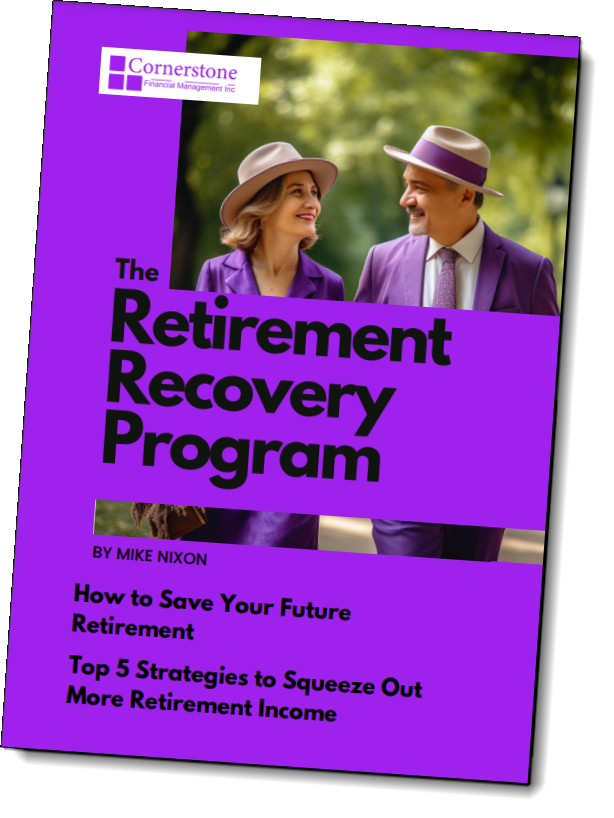A RRIF is an investment plan, established in accordance with Government of Canada requirements, into which you can transfer registered funds (usually your RRSP) without tax liability to establish a source of retirement income.
Some RRIFs are similar to continuing an RRSP beyond age 71, with the exception that you must take some taxable income from the RRIF. You can choose any payment level, as long as the total each year is at least equal to the minimum annual amount. There is no maximum payment level.
With many RRIFs you can vary your annual payments above the minimum amount to meet your needs. Obviously the higher the payments, the sooner your funds will be depleted. RRIFs can continue for the lifetime of the holder.
You don’t have to take any payment from a RRIF in the calendar year it is first funded. In subsequent years, the minimum annual payment changes annually, based on your age and the total value of the RRIF at the beginning of the year.
In some cases, it makes sense to elect to base your minimum RRIF payment on your spouse’s birthdate. You must make this election when the RRIF is created:
1Spouse includes a common-law or same-sex partner.
If your age (or your spouse’s age if you have elected) is less than 71 at the beginning of the year, the minimum payment is calculated by subtracting the age at that time from 90, and dividing the result into the value of the RRIF at the beginning of the year. This formula produces an increased payment each year.
If the age at the beginning of the year is from 71 to 77, the minimum payment depends on whether the RRIF was first funded before or after January 1, 1993.
The percentages in the first column below apply to RRIFs first funded before January 1, 1993, and to which:
The second column applies to RRIFs first funded after January 1, 1993, or a previous RRIF that receives funds from either of the above sources after that date.
All calculations are based on the total value of the RRIF at the beginning of the year.
Age |
All RRIFs 2015+ |
Pre-1993 RRIFs – Prior to 2015 |
Post-1992 RRIFs – Prior to 2015 |
|---|---|---|---|
| 71 | 5.28 % | 5.26 % | 7.38 % |
| 72 | 5.40 % | 5.56 % | 7.48 % |
| 73 | 5.53 % | 5.88 % | 7.59 % |
| 74 | 5.67 % | 6.25 % | 7.71 % |
| 75 | 5.82 % | 6.67 % | 7.85 % |
| 76 | 5.98 % | 7.14 % | 7.99 % |
| 77 | 6.17 % | 7.69 % | 8.15 % |
From age 78 on, the following percentages are applied to the value of all RRIFs at the beginning of the year, based on the age at that time:
Age |
Percentage |
Age |
Percentage |
|---|---|---|---|
| 78 | 6.36 % | 87 | 11.33 % |
| 79 | 6.58 % | 88 | 10.21 % |
| 80 | 6.82 % | 89 | 10.99 % |
| 81 | 7.08 % | 90 | 11.92 % |
| 82 | 7.38 % | 91 | 13.06 % |
| 83 | 7.71 % | 92 | 14.49 % |
| 84 | 8.08 % | 93 | 16.34 % |
| 85 | 8.51 % | 94 | 18.79 % |
| 86 | 9.99 % | 95 or older | 20.00 % |
Income tax may be deducted from RRIF payments. The withholding tax only applies to the portion of a RRIF payment in excess of the annual minimum. However, it applies to the full amount of any payments taken in the same calendar year your RRIF is opened.
RRIF Withholding Tax Table
| Withdrawal | Tax rate** |
| Up to $5,000 | 10.00 % |
| $5,000 to $15,000 | 20.00 % |
| Over $15,000 | 30.00 % |
* Source – CRA Tax Bulletin
** Applies to all provinces except Quebec.
At your request, your RRIF provider can withhold more tax than the minimum required. This can be a convenient way of ensuring that sufficient tax is being deducted at source to fend off quarterly income tax installment payments.
RRIFs also offer simplicity in estate planning. If you die, your spouse or partner can continue to receive income from your RRIF or the account can be transferred tax-free to their RRIF or RRSP. Or, the remaining balance can be paid to your estate or beneficiary.
Like RRSPs, RRIFs come in all shape and sizes. Because they can be customized to meet your retirement income needs, your first step should be to contact our office for more information.


Read the
Retirement Recovery Program
Top 5 Strategies to Squeeze Out More Retirement Income
Many people will offer you advice on which investments…
For most Canadians, retirement is a major financial goal that…
Many people assume that estate planning is only for the…
Investment tax planning is not just about writing the…
Careful portfolio analysis is necessary to ensure that…
Proper analysis is vital to ensure that you aren’t paying too…



Aligned Capital Partners Inc. is a member of the Canadian Investor Protection Fund (www.CIPF.ca) and Canadian Investment Regulatory Organization (www.CIRO.ca). All non-securities related business conducted by Cornerstone Financial Management Inc. is not covered by the Canadian Investor Protection Fund (CIPF). Non-securities related business includes, without limitation, advising in or selling any type of insurance product, mortgage service, and/or tax return preparation service. Accordingly, ACPI is not liable and/or responsible for any non-securities related business conducted by Cornerstone Financial Management Inc., and all such non-securities related business is the responsibility of Cornerstone Financial Management Inc. alone.
Contact Us
Call us
519-204-2495
Email – General Inquiries
info@cornerstonefm.ca
Office – By Appointment
380 Wellington St.
Tower B, 6th Floor
London ON N6A 5B5
Connect With Us
LinkedIn
Click to Follow